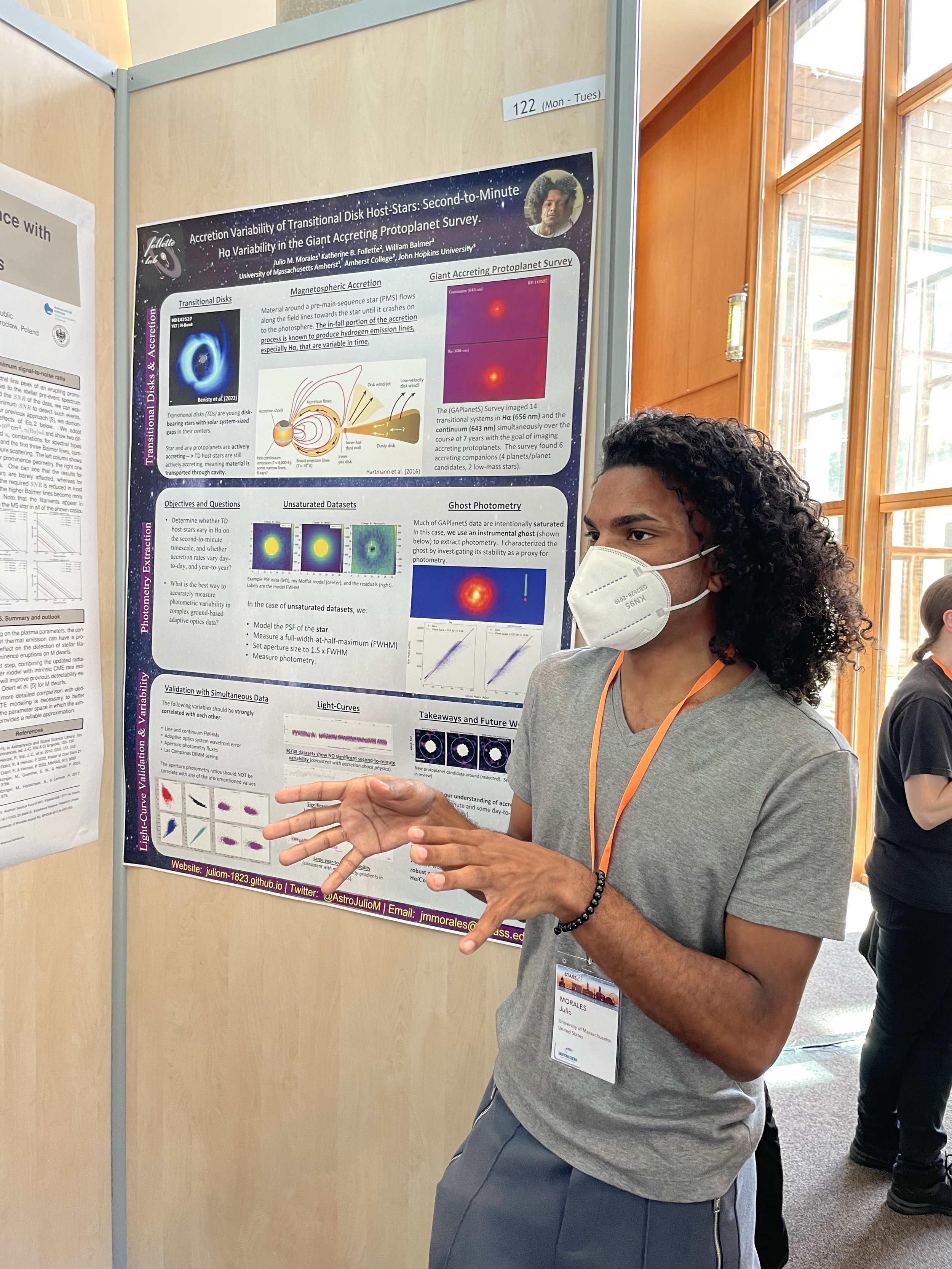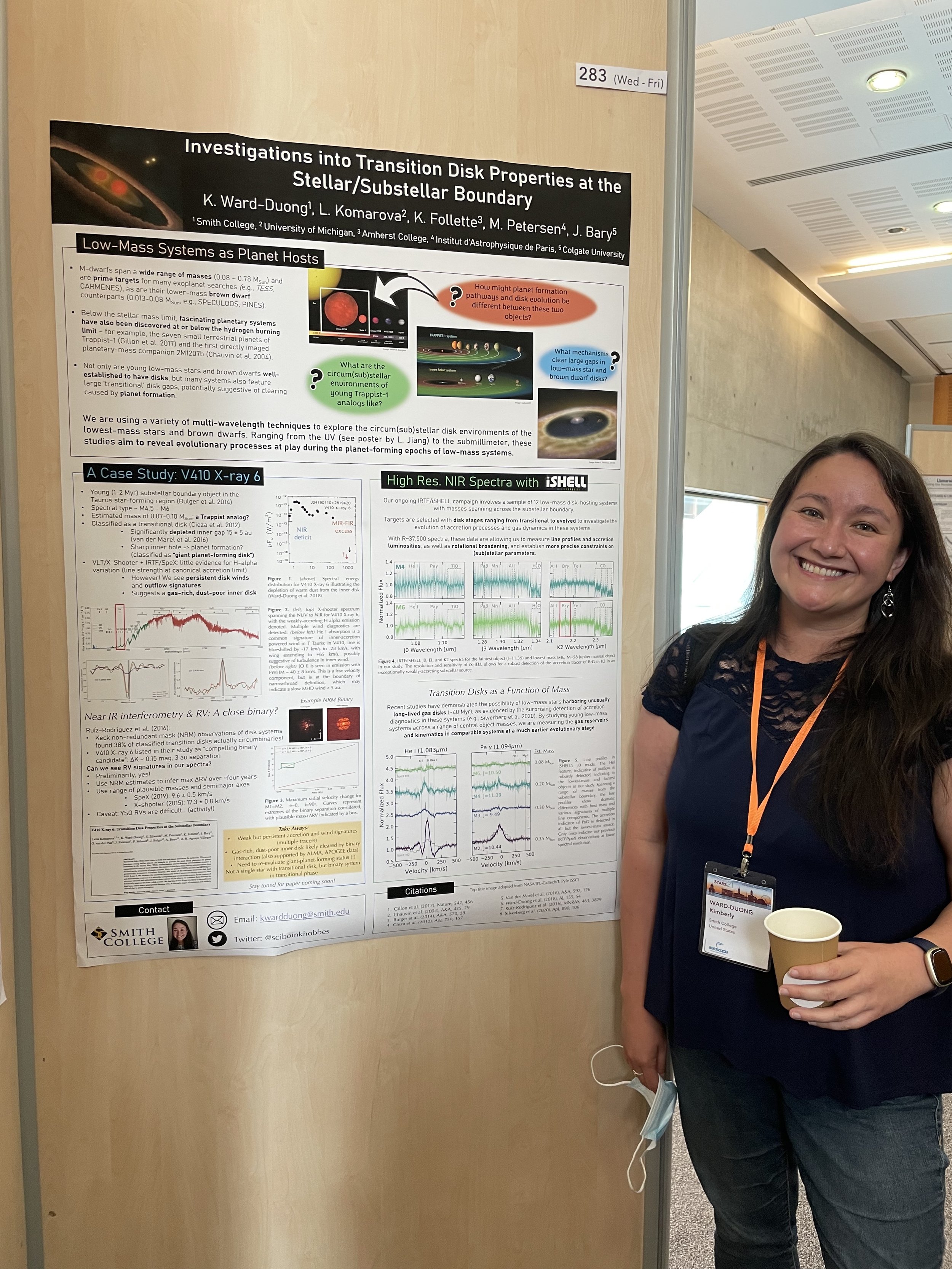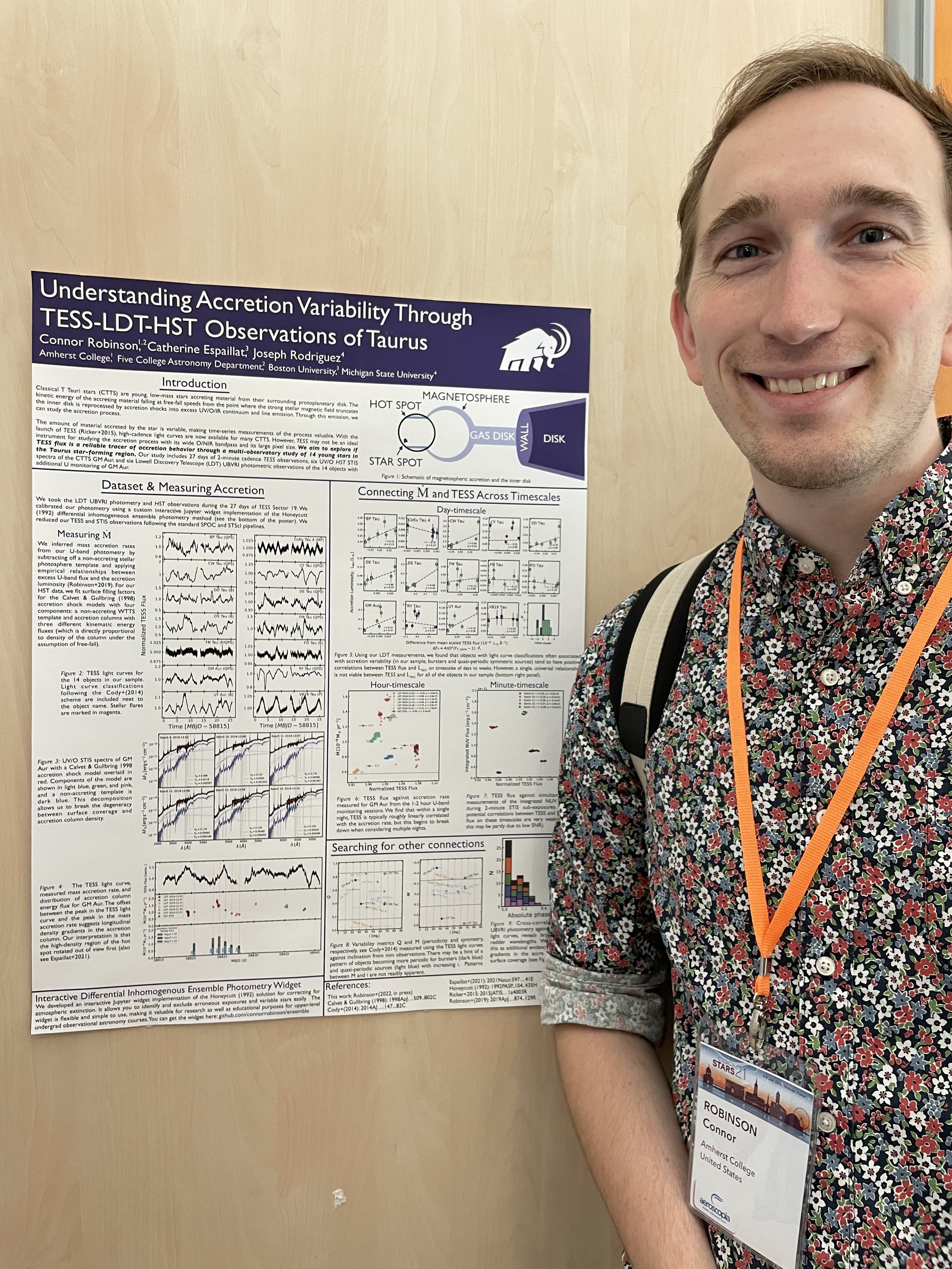Follette Lab Takes Europe by Storm - Part 2 (Cool Stars)
Several of us traveled straight from Leiden and the Spirit of Lyot Conference (see last post) to equally lovely Toulouse, France where we met up with other lab members for the “Cool Stars” conference and presented some more of the photometric monitoring and accretion studies that our group has been working on.
Lab Photo at Toulouse Observatory
Left to right: Lab members/alumni Kim Ward Duong, Lillian Jiang, Julio Morales, Kate, David Formica, Connor Robinson and William Balmer at the Toulouse observatory
Finishing grad student Sarah Betti presented both a poster and a talk about a great new result on NIR accretion-tracing lines from protoplanet Delorme 1 (AB)b! Line ratios are consistent with emission from a planetary accretion shock.
My poster was an overview of a bunch of the projects going on in our group. We were puzzled by the high apparent accretion rates of directly imaged PMCs. Evidence of formation by gravitational instability? Bad scaling relations? The jury is out.
Lab alum/JHU grad student William Balmer presented recently published astrometric and photometric characterization of directly imaged accreting companion HD142527B - misinclined and accretion variable.
Recent UMass graduate and incoming PhD student at NMSU Julio Morales discussed H-alpha time variability of transitional disk host stars.
Amherst College senior David Formica presented a short timescale quasi-periodicity analysis of 14 T Taurus stars from TESS.
Recent Smith College graduate and incoming UT Austin PhD student Yushu (Lillian) Jiang presented new results constructing a multi wavelength accretion template from archival observations of young planet-hosting brown dwarf 2M1207A.
Lab co-lead Connor Robinson showed results of a TESS-LDT-HST coordinated campaign to understand accretion variability in Taurus.
Lab co-lead Kim Ward-Duong presented new IRTF/iSHELL + ALMA data probing disk diagnostics, accretion properties, and winds in a number of disk-bearing very low mass stellar and sub stellar companions.
Left to right: lab friend Emma Robinson, Connor Robinson, Kim Ward-Duong, Kate, Lillian Jiang, Julio Morales at the Cool Stars 21 conference banquet photo booth








